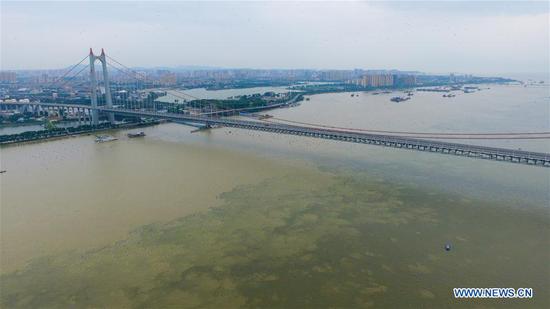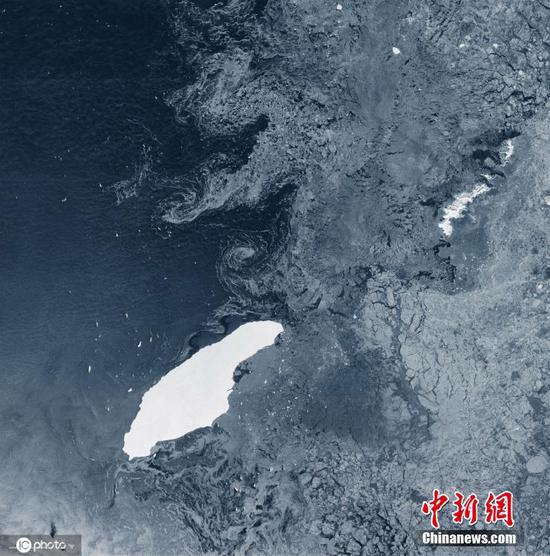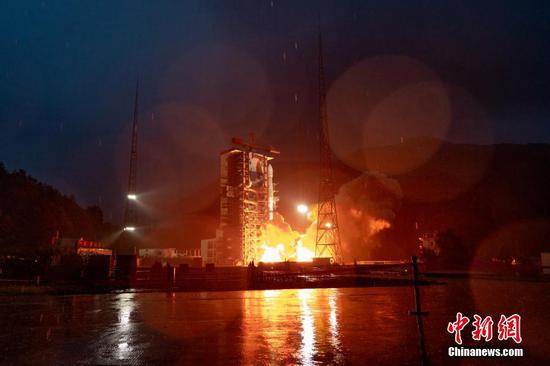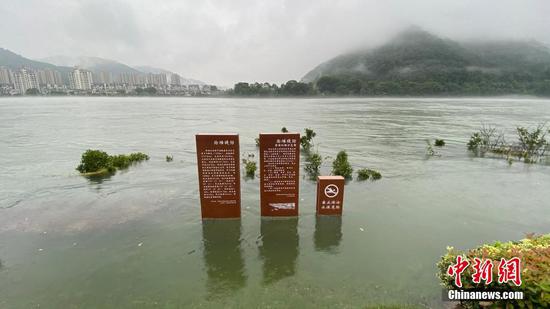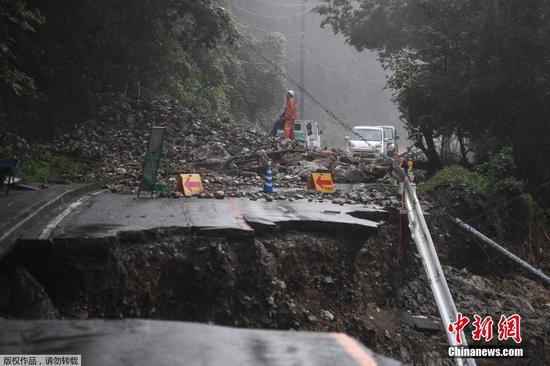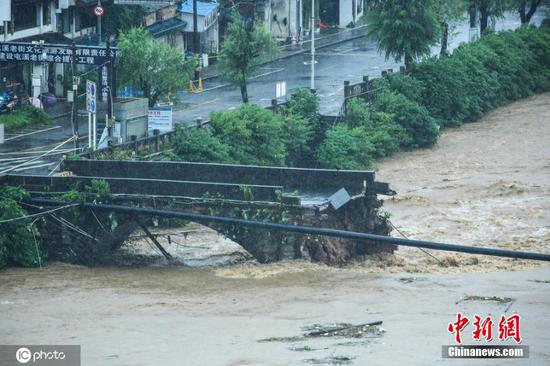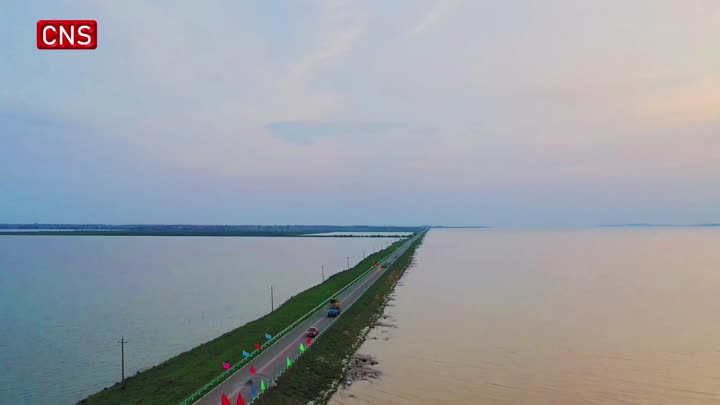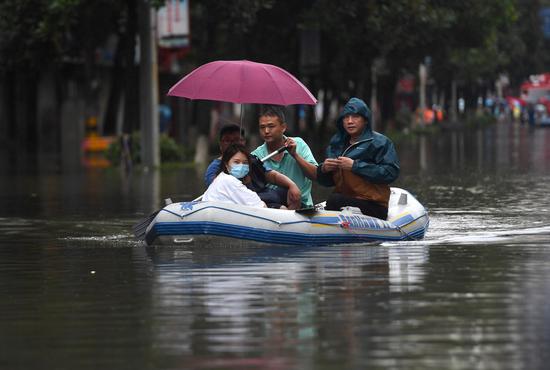
Rescue team members transfer flood-stranded people with a rubber boat in Jingdezhen of east China's Jiangxi Province, July 8, 2020. (Xinhua/Wan Xiang)
China is bracing for serious flooding in the area of Poyang Lake in Jiangxi Province, as water level at the country's largest freshwater lake remains high above alert level, amid ongoing torrential rains that have caused widespread flooding along the Yangtze River basin.
The water level at the lake's key Xingzi hydrological station rose to 22.6 meters at 10 a.m. Monday, breaking the 22.52-meter record of 1998, and well above the alert level of 19 meters.
Home to more than 46 million people, Jiangxi has been among the worst affected areas in recent weeks, as the Yangtze River basin witnessed floods following the heaviest average rainfall in decades. There has been unprecedented flooding along several rivers that lead into Poyang Lake, and the rising levels suggest that the overall situation is grim.
Jiangxi has made every effort to wrestle with the unfolding disaster, raising its flood-control response to the highest level on Saturday and mobilizing a wide range of resources to tackle flood risks.
Chinese leadership has called for the greatest efforts to ensure the safety of people's lives and property.
UNPRECEDENTED FLOODS
Vice Minister of Emergency Management Zheng Guoguang said that since June, more than 38 million people across the country had been affected by floods, with 141 people dead or missing.
Warning levels had been exceeded in a total of 433 rivers, mainly distributed in the basins of the Yangtze River and Taihu Lake, Zheng told a press conference, adding that the average precipitation in the Yangtze River basin since June is a record high since 1961.
Poyang Lake is fed by several rivers within Jiangxi, and the lake's water then flows into the Yangtze River, China's longest waterway. The water then flows eastward to the sea. As a conjunction point, the lake functions to adjust the water levels of rivers during drought and flood seasons.
Weeks of torrential rains have swelled rivers and lakes in Jiangxi, with several embankment breaches taking place, resulting in flooding on a scale not seen before.
The provincial flood control and drought relief headquarters said that 2,439 km of the 2,545 km of riverside and lakeside embankments in the province had seen water levels exceeding the warning marks.
Poyang County, located next to Poyang Lake, has already seen no less than 14 of its levee sections breached.
As of Sunday afternoon, floods since July 6 had disrupted the lives of over 5.5 million people in the province, with nearly half a million evacuated from flood-prone areas. A total of 183,000 people were in urgent need of living assistance, according to the headquarters.
The floods damaged over 510,700 hectares of crops and caused a direct economic loss of 8.13 billion yuan (1.16 billion U.S. dollars).
The headquarters predicted that a new round of rainfall would hit the region starting Tuesday.
In Hubei Province, the Three Gorges Dam, the largest water-control system along the Yangtze River, has been used to ease the pressure at the middle and lower reaches of the river's main course. The outbound flow of water has been reduced by almost half to 19,000 cubic meters per second since July 7, withholding much of the floodwater in the Three Gorges reservoir, according to the Yangtze River water resources commission.
The Ministry of Water Resources on Sunday raised the national emergency response for flood control from Level III to Level II, the second-highest in the country's emergency response system.
Chen Tao, the chief weather forecaster at the National Meteorological Center, attributed the continuous rainfall to lingering and stable weather systems, which have kept the rain-belt stationary in the middle and lower reaches of the Yangtze River.
"Compared with before, this year's rainfall was more intense and repeatedly poured down on the same region, which brought significant pressure on flood control," Chen said.

















